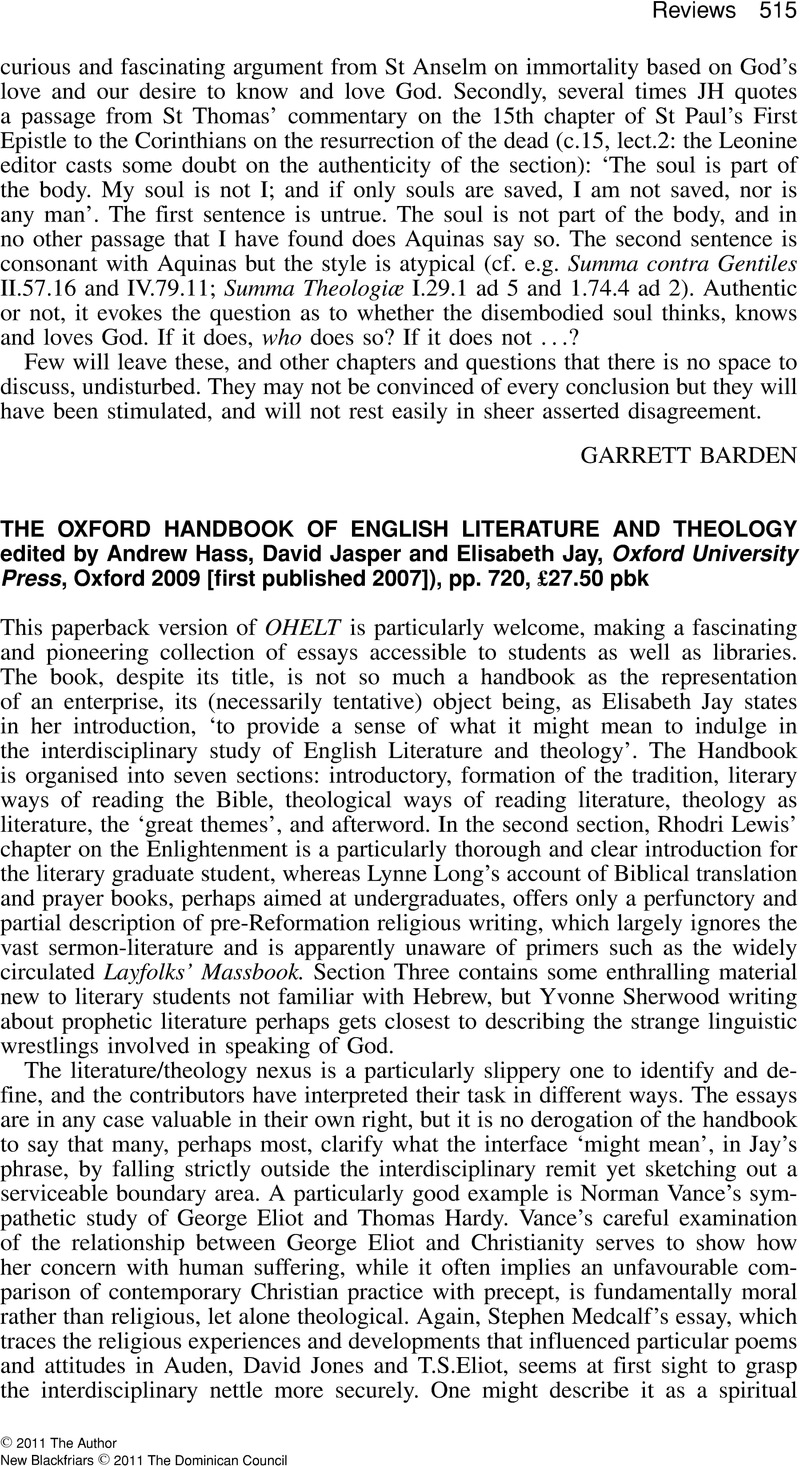No CrossRef data available.
Article contents
The Oxford Handbook of English Literature and Theology edited by Andrew Hass, David Jasper and Elisabeth Jay, Oxford University Press, Oxford 2009 [first published 2007]), pp. 720, £27.50 pbk
Review products
The Oxford Handbook of English Literature and Theology edited by Andrew Hass, David Jasper and Elisabeth Jay, Oxford University Press, Oxford 2009 [first published 2007]), pp. 720, £27.50 pbk
Published online by Cambridge University Press: 01 January 2024
Abstract
An abstract is not available for this content so a preview has been provided. Please use the Get access link above for information on how to access this content.

- Type
- Reviews
- Information
- Copyright
- Copyright © 2011 The Author. New Blackfriars © 2011 The Dominican Council.


